Rope Bridge in Carrick-a-Rede
Rope Bridge in Carrick-a-Rede | Everything You Need to Know
We all know those friends who just can’t stay in one place, right? They’re always on the move, looking out for the next adventure. Simply sightseeing isn’t enough for them—they crave excitement, challenge, and a bit of risk during travels. For these adventure lovers, the rope bridge is the ultimate destination. The Carrick-a-Rede Rope Bridge stands approximately 100 feet (30 meters) above the rocks and the Atlantic Ocean below. Crossing it, especially when the wind makes it sway, can be a truly challenging task.
Today, I am going to cover everything you need to know about the Carrick-a-Rede Rope Bridge, from ticket prices to nearby attractions. Let’s get started!
Where is the Rope Bridge?
You’ll find the Carrick-a-Rede Rope Bridge in Northern Ireland, a stone’s throw from Ballintoy Harbour. Getting there is easy. It’s just a quick 10-minute drive from Ballycastle or a short 20-minute drive from the Giant’s Causeway.
During the summer months, you might experience delays due to the high number of tourists. After all, the Giant’s Causeway and the Carrick-a-Rede Rope Bridge are Northern Ireland’s two most popular attractions.
There are quite a lot of tour buses going up and down this road too. You can easily join a day tour from Dublin or Belfast, or take public transport. Alternatively, you can take a bus, which takes almost the same amount of time.
By Train
– Duration: Approximately 5 hours and 48 minutes.
– Cost: Between €40 to €65.
– Route: Take a train from Dublin to Belfast, then transfer to a local train or bus service to Ballintoy.
By Bus
– Duration: Similar to the train, taking around 5 to 6 hours.
– Cost: Comparable to the train fare.
– Route: Take a bus from Dublin to Belfast, and then a connecting bus to Ballintoy.
You can also rent a car to visit the Carrick-a-Rede Rope Bridge. However, there are a few things to keep in mind:
– Narrow and Windy Roads: The country roads in Ireland are quite narrow and windy, which can be challenging compared to the wider roads in the US.
– Driving on the Left: In Ireland, people drive on the left side of the road, which can be confusing if you’re used to driving on the right.
– Experience Level: If you are not a very experienced driver or are not comfortable with these conditions, it might be better to join a day tour or take public transport.
When to Visit the Rope Bridge?
The best time to visit the Carrick-a-Rede Rope Bridge is during the spring or summer, from May to September when the weather is ideal for outdoor activities.
Why Visit in Spring or Summer?
– Pleasant Weather: The weather is usually mild and conducive to exploring the beautiful coastal scenery.
– Extended Hours: The bridge stays open longer during this period, from 9:00 am to 5:00 pm, giving you more time to enjoy the experience.
Tips to Avoid Crowds
– Weekday Visits: To avoid the busiest times, plan your visit on a weekday.
– Early Mornings: Arriving early in the morning can help you beat the crowds and enjoy a more peaceful crossing.
– Advance Booking: Purchasing tickets in advance can help streamline your visit and avoid long waits.
Just a heads up: the Rope Bridge shuts down immediately if the wind is too strong, so it’s important to pick the right season! We wouldn’t want an unexpected shutdown to ruin our plans.
Is Rope Bridge free?
Generally,
– Adults: £13.50
– Children (ages 5-17): £6.75
– Family Ticket (2 adults and up to 3 children): £33.75
But it changes depending on the season.
You can enjoy a free walk from the Rope Bridge car park to the actual bridge without purchasing a ticket. This scenic walk is about 1 km and takes around 20 minutes, offering beautiful views of the coastline and surrounding area.
When you arrive at the Carrick-a-Rede Rope Bridge, you’ll notice a wooden hut near the car park. It might seem like you have to pay to go past that point, but here’s the twist: you don’t. If you’re not planning to cross the Rope Bridge, just walk past the wooden hut and keep going.
And I saw many doing this due to their fear of heights. They parked their car for £10 per car and went on to enjoy the beauty of the rope bridge. But trust me, even the short walk to the rope bridge is absolutely beautiful. Here, you can find Larrybane Quarry, Sheep Island, and on a clear day, maybe even Scotland.
The locals say to plan for about 1 to 1.5 hours for your visit. If you go when it’s not too busy, it might be quicker and in the summer when it’s packed, expect it to take a bit longer.
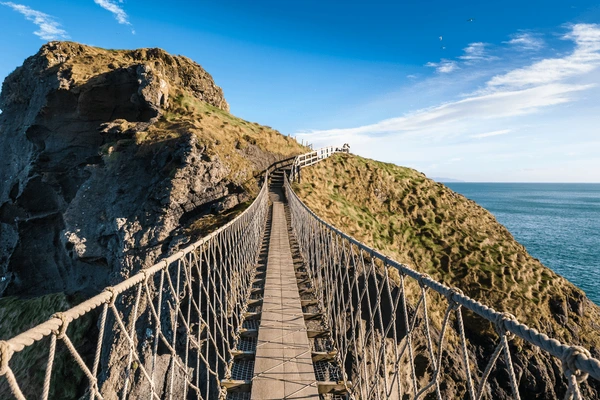
Image credit :- Dublin Zoo
Is Rope Bridge Safe?
Okay, let me share my experience. You will get a clear idea from that.
Like everyone, I was thrilled about crossing the bridge. Near the parking lot, there was a little shop selling drinks and snacks, with tables outside where you could sit and eat.
Yeah, this bridge is usually packed with lots of people! But I had to stand for only 15 minutes in the queue and there was plenty to look at while waiting.
But what caught my eye was the height of the bridge. It was my first time seeing it in real life and all I noticed were wires hanging 100 feet in the air, 100 feet! And if I fell from that, I was sure to die. This seemingly death trap was 60 feet long from Northern Ireland’s mainland to the small fishing island, Carrick-a-Rede.
It’s natural for nervousness to grow as the moment of crossing the Carrick-a-Rede Rope Bridge draws nearer. The height and swaying motion can be intimidating, especially for those who are not used to such experiences. Witnessing others changing their minds and turning back may have added to the feeling of apprehension.
I calmed down after a short time. The security arrangements actually helped with that. As I went closer to the bridge, I saw staff members on both sides. they were keeping track of how many people were allowed on it at one time. The security measures in place, such as staff members stationed on both sides of the bridge, are designed to ensure the safety of visitors and provide peace of mind during the crossing. Their presence offers reassurance and guidance, helping visitors feel more confident about taking the next step onto the bridge. The planks were quite close, with only a minimum gap between them. The controlled crossing, with staff members keeping track of the number of people allowed on the bridge at one time, helps maintain a safe and manageable environment for visitors. This ensures that the bridge doesn’t become overcrowded and that everyone can cross in a timely and organized manner. And the staff members reassured me that crossing wouldn’t take too long either, only 20- 30 seconds.
Why does this bridge exist at all?
There was a reason for all the arrangements: For generations, fishermen relied on Carrick-a-Rede as a prime location for catching salmon, making it a vital spot for the local economy and community. The name “Carrick-a-Rede” originates from the Scottish Gaelic “Carraig-a-Rade,” which translates to “The Rock in the Road.” This name reflects the perception of the island as an obstacle in the path of migrating salmon.
The history of salmon fishing at Carrick-a-Rede and Larrybane dates back centuries, with records indicating activity in the area as far back as 1620. This rich heritage of salmon fishing played a significant role in shaping the cultural and economic landscape of the Causeway They even went as far as building a castle on the River Bann in Coleraine just to manage all the fishing action.
The efforts of King James I & VI to encourage Protestant traders from London to settle in Northern Ireland in the early 1600s by offering them salmon fishing rights highlight the significance of salmon fishing as an incentive for colonization and economic development. This initiative played a role in the establishment of communities along the Causeway Coast, where the tradition of salmon fishing became deeply ingrained. Sometimes, these cottages are on tiny islands or cliffs, like Carrick A Rede and Kinbane Head.
Story of Salmon
Finn McCool, also known as Fionn mac Cumhaill, is a legendary figure in Irish mythology. In tales about Finn McCool, a legendary figure, there’s a special salmon that gave him incredible knowledge when he took a bite of it by accident. To celebrate the return of salmon to the River Lagan, Belfast commissioned the Big Fish sculpture in the 1970s. This sculpture, also known as “The Salmon of Knowledge,” is an iconic landmark located at Donegall Quay in Belfast.
For over 350 years, salmon fishermen have constructed bridges to Carrick-a-Rede Island, creating a vital link for their fishing activities. These bridges have undergone significant changes over time, reflecting advancements in construction and a growing focus on safety. In the 1970s, the bridge had only one handrail and A few wooden planks formed the walking surface, with noticeable gaps between them, making the crossing a test of nerves. Still, you can even find a famous picture of a brave man sitting on this risky bridge peacefully! Visit this link.
Fast-forward to today, the bridge is much safer. Even though it moves a bit, The bridge is equipped with handrails on both sides, offering firm support and stability for those crossing. The walking surface of the bridge consists of strong wooden planks with minimal gaps between them. This ensures a solid footing and reduces the risk of tripping or slipping. This feature helps visitors maintain their balance and feel more secure, a strong boardwalk in the middle, and nets on the sides so you won’t slip through. So, no need to worry about falling.
This change happened in 2008. A construction company from Belfast put up the current wire rope bridge. It’s strong and steady for everyone who crosses it today.
And, what happened with the fishing?
In 2002, a significant chapter in the history of Carrick-a-Rede came to an end. The island’s fishermen, who had relied on these waters for centuries, faced a dramatic change as the salmon population dwindled due to various environmental factors. Well, in 2002, things changed for the island’s fishermen. the fish started migrating to different places. Pollution and too much fishing out at sea also played a part in making the salmon population go down. So, in 2002, after hundreds of years of fishing, it all came to an end, and the last fish was caught. Alex Colgan, a fisherman from Ballintoy, was the very last person to fish at Carrick-a-Rede. Today, the only physical reminder of this rich fishing heritage is a lonely, whitewashed cottage on Carrick-a-Rede Island. This cottage stands as a silent witness to the centuries of fishing activities that once thrived in the area.
What’s on the other side of the rope bridge?
Perched 100 feet above the Atlantic Ocean, the bridge offers breathtaking views and a unique perspective of the surrounding landscape. If you’re brave enough to walk across the shaky 100-foot high bridge, you’ll get an amazing view of the green water flowing around, As you cross the bridge, you’ll be treated to stunning views of the emerald-green waters below. The clarity and color of the water, combined with the dramatic coastal scenery, create a picturesque setting. It’s a top choice for selfies and capturing the perfect moment; The Carrick-a-Rede Rope Bridge is a top choice for photography enthusiasts. Whether you’re taking selfies or capturing the sweeping vistas, the bridge offers numerous opportunities for memorable photos. indeed an incredible experience, almost like seeing it from a bird’s eye.
As I reached the other side, I was amazed by the views of Rathlin Island and even Scotland. Plus, it was super close to the UNESCO World Heritage Site, the Giant’s Causeway. There were sea birds all over the sky. You might spot it too, it is the most common scene.
Along with spotting seabirds, you might also see basking sharks, dolphins, and porpoises from the rope bridge. Keep an eye out for these cool creatures while exploring the rope bridge area.
Since crossing the bridge is the main thing to do, lots of people brought along a picnic to really make the most of their visit. That way, they could relax, sit down, and take in the beautiful view for a while. This allowed them to relax, sit down, and take in the beautiful view for a while. I found this idea pretty great, and I think I might try it next time too. I found this idea pretty great, I think I might try that next time too.
Oh yeah, a unique part that can’t be missed is stargazing. Carrick-a-Rede is an incredible spot where you can see truly dark skies at night. It’s one of only two sites in Northern Ireland granted ‘Dark Sky Discovery’ status. The other spot is Oxford Island by Lough Neagh. Looking up at the stars from Carrick-a-Rede is like entering a magical world filled with twinkling lights in the dark sky. However, to experience this, you have to stay overnight.
If you can’t stay at night, then just hang out there for a couple of hours and take a moment to soak it all in before you head back across the bridge. There is just one way back – across the bridge.
Once you’re back on the other side of the bridge, you can walk up the steps and follow a different path that goes over the hill. From there, you’ll see the bridge from a new angle, offering a fresh perspective on its magnificent structure. Eventually, you’ll loop back to the main path that leads to the car park, completing your journey with a final glimpse of the awe-inspiring landscape.
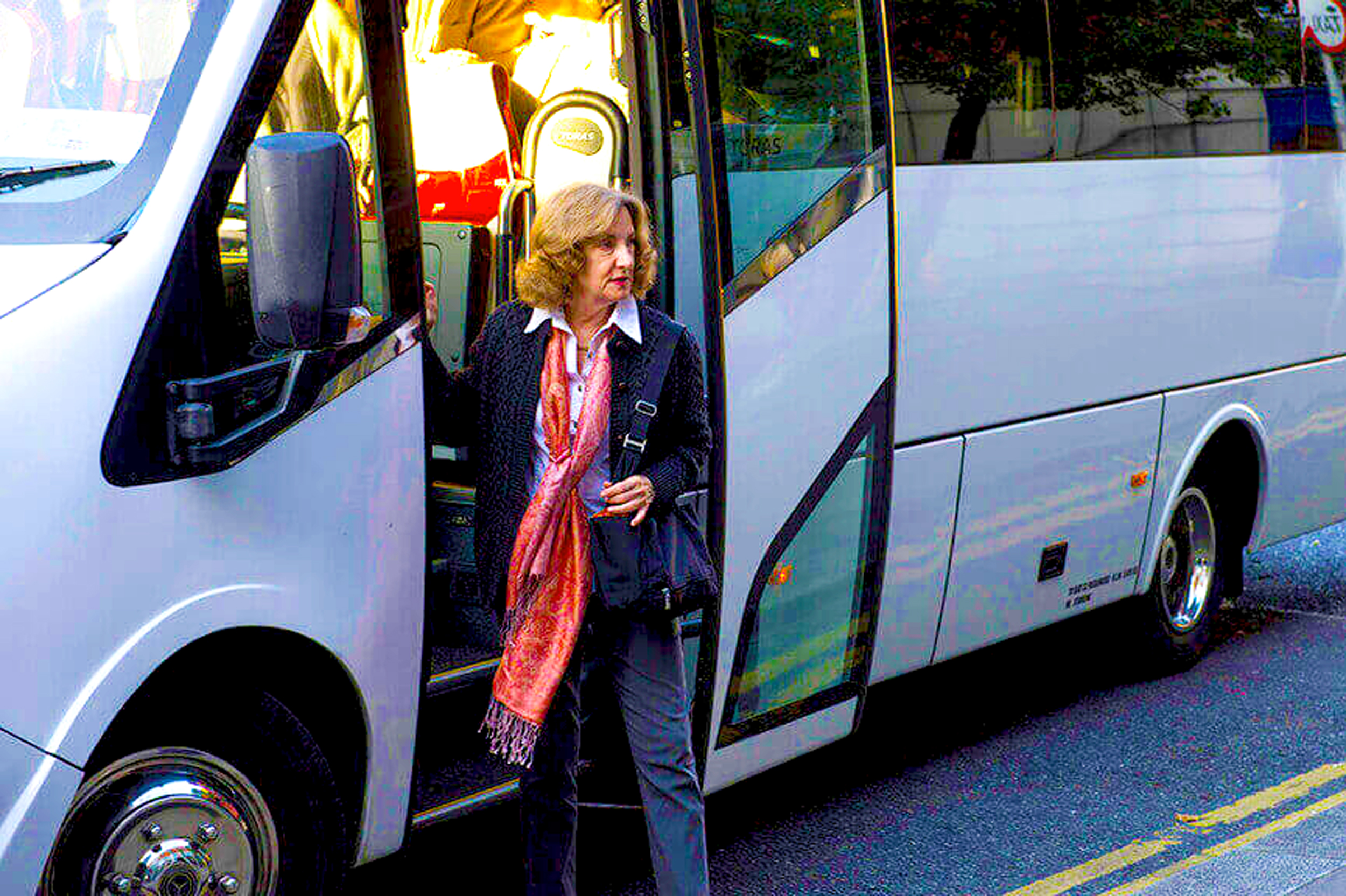
Ireland Tour For Seniors | The Best Ireland Tour Plan for a Senior
Plan the perfect Ireland tour for seniors! Discover rich history, stunning landscapes, and travel tips for a memorable, relaxed adventure.
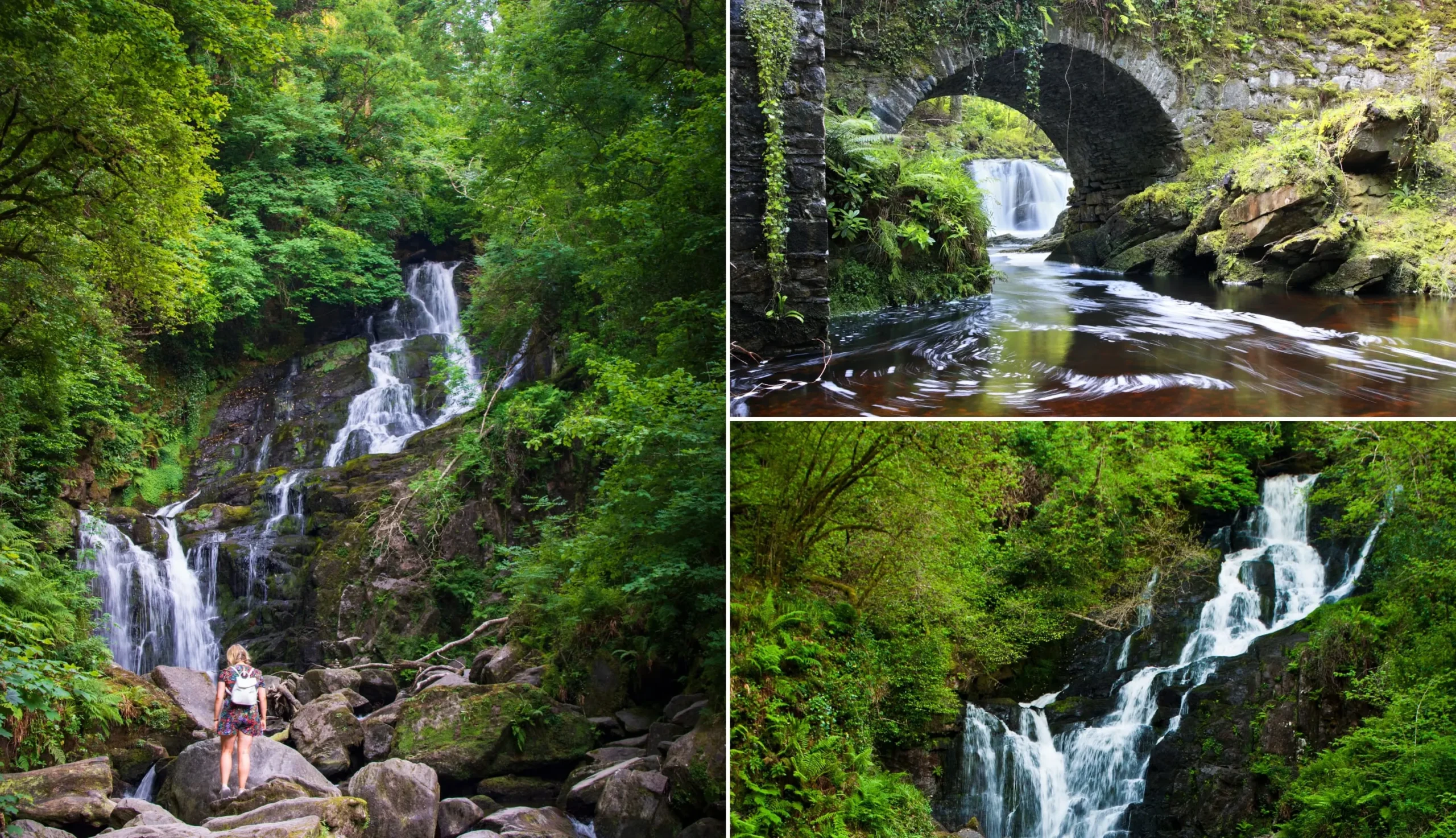
Explore Torc Waterfall: Everything You Need to Know
Explore Torc Waterfall: Find visitor information, hiking tips, and scenic views of this natural wonder in Ireland.
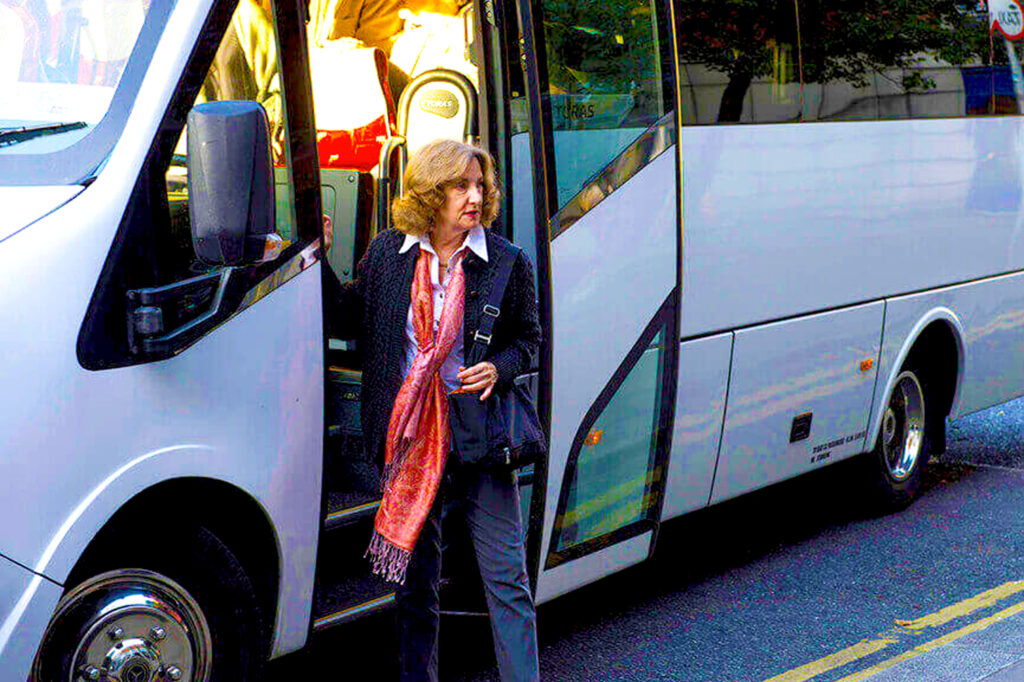
Ireland Tour For Seniors | The Best Ireland Tour Plan for a Senior
Plan the perfect Ireland tour for seniors! Discover rich history, stunning landscapes, and travel tips for a memorable, relaxed adventure.
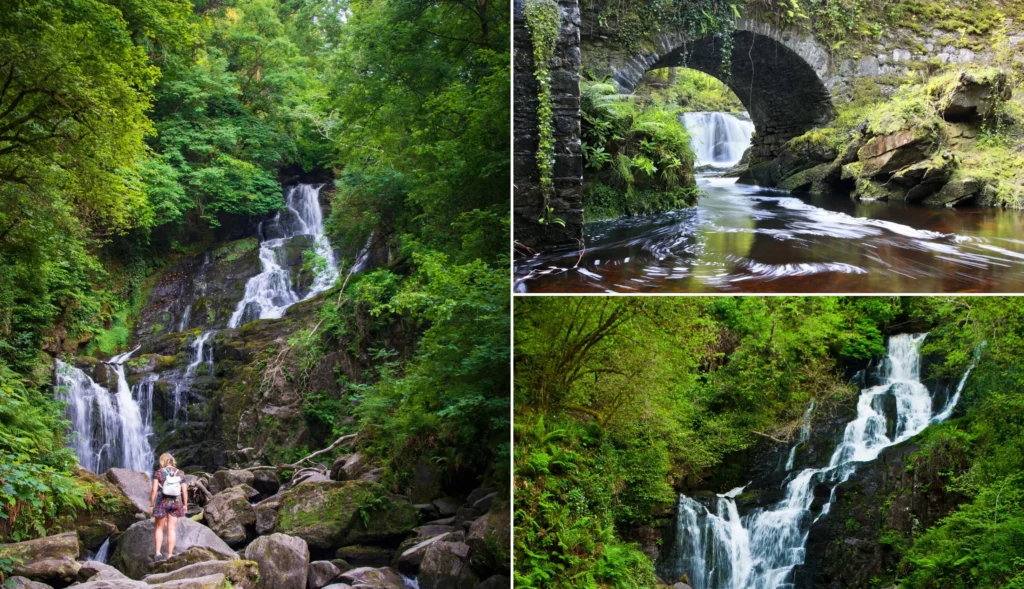
Explore Torc Waterfall: Everything You Need to Know
Explore Torc Waterfall: Find visitor information, hiking tips, and scenic views of this natural wonder in Ireland.

